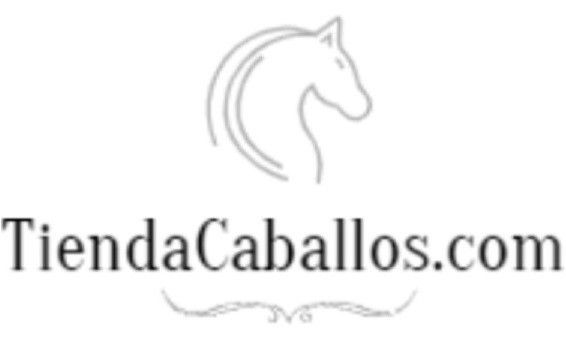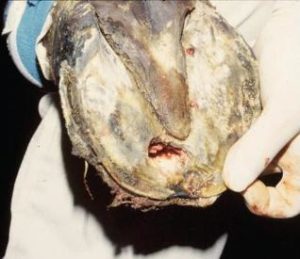How to care for a horse's hooves
Caring for a horse's legs and hooves will safeguard its long-term solidity. Here are some tips for keeping a horse's feet healthy.
Shoeing or trimming interval
In summer.
In the summer, the horses must be trimmed or shod for six to eight weeks. However, a responsible horse owner should trim his horse's hooves as often as necessary. In some cases, high-performance horses may need more frequent trimming.
In winter.
Hooves generally grow more slowly in the winter. Due to the slower growth rate, horses can be trimmed at longer intervals. For example, six to twelve weeks may be sufficient. The interval of trimming or shoeing depends on each horse and its growth.
Hoof balance
A balanced hoof allows the horse to move better as well as putting less stress on the bones, tendons and ligaments. The ideal foot has the following characteristics: right pastern angle, easy breakage, adequate heel support, and lateral balance (Figure 1).
Right angle helmet-metacarpus . A straight line should be seen from the pastern down through the front of the hoof wall. This allows the bones to line up correctly from the pastern to the bony part. Lateral balance is manifested when the foot lands evenly from side to side as the horse walks.
Easy to break . The toe is not too long and is square, rounded or rolled. This allows for easier movement with each step. Too much rupture can also lead to health problems.
Adequate heel support . The shoe extends to the end of the hoof wall and supports the back of the entire leg. Ideally, the back edge of the shoe is below a line drawn in the center of the bone.
Hoof Wall Care
Weather conditions can damage the helmet. During dry weather, or with frequent changes from wet to dry, horses are prone to developing dry and brittle feet. Long trimming intervals can cause excessive hull elongation, plus the hull wall can often develop hull wall cracks (Figure 2). Unfortunately, some horses are born with poor quality hooves and are more susceptible to problems.
Treatment tips . Apply moisturizer for helmets on the wall and the sole of the helmet dry, if the helmet has cracks or is brittle, do it more frequently. Proper nutrition and helmets supplements available in our online store can help improve the quality of helmets.
Hoof care in winter
In winter, special care must be taken if the horse lives outside. Snow can accumulate under the sole and cause bruising or imbalance. Ice can be very slippery if the horse is wearing normal shoes.
Winter tips . If the horse is normally barefoot, remove the shoes. Horses tend to slip less when they are barefoot or not shod. Horses that are prone to sole bruising may need shoes. If the horse is shod during the winter, put snow pads under the shoes and small teeth, borium or nails placed in the heels. The snow pads will prevent snow and ice from accumulating under the shoe and the teeth or nails will allow for better traction. Finally, winter weather can dry out the hoof wall and the hooves may need to be hydrated.
Nutrition
Maintaining a horse's nutrition can help alleviate some hoof problems. Feeding good quality hay, supplementing the right amount of vitamins and trace elements, and ensuring the horse has constant access to fresh, clean water is important for hoof health and the horse's overall health. Poor nutrition can lead to future hoof problems, and correcting a horse's nutrition can gradually improve hoof health. Cooperation between horse owners, veterinarians and equine nutritionists is necessary to ensure proper horse nutrition.
Research has shown that horses with poor quality hooves can benefit from commercially available hoof care products that contain biotin (20 mg / day), iodine (1 mg / day), methionine (2500 mg / day) and zinc (175 to 250 mg). /day).
Common helmet problems
Bad branding or trim. Long hooves can cause collapsed heels, strain on the flexor tendons and the navicular bone (Figure 3). If the horse is too upright, it can cause trauma to the coffin bone and joint. An unbalanced helmet can strain the collateral ligaments and joints.
Cracks in the hooves . Horizontal cracks or blowouts are usually caused by a coronary band injury or a blow to the hoof wall. Horizontal cracks or blowouts do not usually cause lameness. Cracks are generally seen on long unshoed horses and can be corrected with clippings and horseshoes. Sand cracks are the result of a coronary band injury or white line disease bursting in the coronary band. Sand cracks can be a cause of lameness. Treatment of sand cracks includes determining the cause and eliminating it, floating the hull wall (without allowing it to bear weight), and / or fixing or patching the crack. It usually takes nine to 12 months for the hoof to grow.
Candidiasis . Candidiasis is a black, smelly exudate, usually found around the frog, that is associated with wet and dirty conditions. Candidiasis can invade sensitive tissues and cause lameness. Treatment includes keeping the stables or stables clean and dry to help eliminate yeast infection.
Solar abscess . Solar abscess is an infection on the sole of the hoof that can cause acute or severe lameness (Figure 4). Solar abscess can be caused by trauma, bruising, or a foreign body. Treatments include removing the foreign body if possible, soaking the helmet in warm water and Epsom salt, and keeping the helmet bandaged, clean, and dry.
Hot Nail or Street Nail . A hot nail is a horseshoe nail that is driven into sensitive structures in the hoof wall. Hot nails often cause lameness. Treatments include rinsing the nail hole with an antiseptic, plugging the hole or bandaging the foot, and giving a tetanus booster. A street nail is any foreign object that enters the foot. This is an emergency and a veterinarian should be called immediately. Treatment depends on the structure of the affected hoof.
laminitis . Laminitis is the inflammation of the sensitive laminae. It is the rotation (the coffin bone rotates down inside the hoof capsule) and / or the sinking (the coffin bone sinks down) of the coffin bone. There are several causes of laminitis. Treatments include regular shoeing or trimming, keeping hooves short, and frog and sole support.
navicular . Scaphoid syndrome includes disease processes involving the scaphoid bone, bursa, ligaments, and / or soft tissue structures. Horses often land their toes first due to heel pain. Causes of navicular syndrome include hereditary predisposition (quarter horses and thoroughbreds), poor conformation, hoof imbalance and exercise on hard surfaces. Treatments include footwear, keeping a short toe, lifting the heels, and good break and pads.
Conclusion:
Since most horses have different hoof and growth problems, in addition to good care and maintenance, a good working relationship with a farrier and veterinarian is needed to ensure a healthy horse and hooves. Many different leg problems can occur in horses. To reduce hoof problems, follow these important tips:
- Trim or regular footwear
- Maintain a good balance of hooves
- Footwear suitable for different climatic and standing conditions
- Appropriate treatment if a disease process occurs
- Maintain proper horse nutrition
source: extension.org










